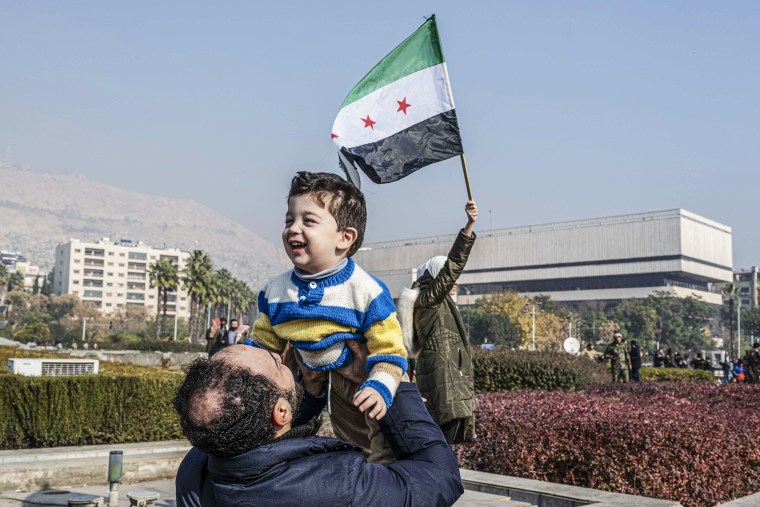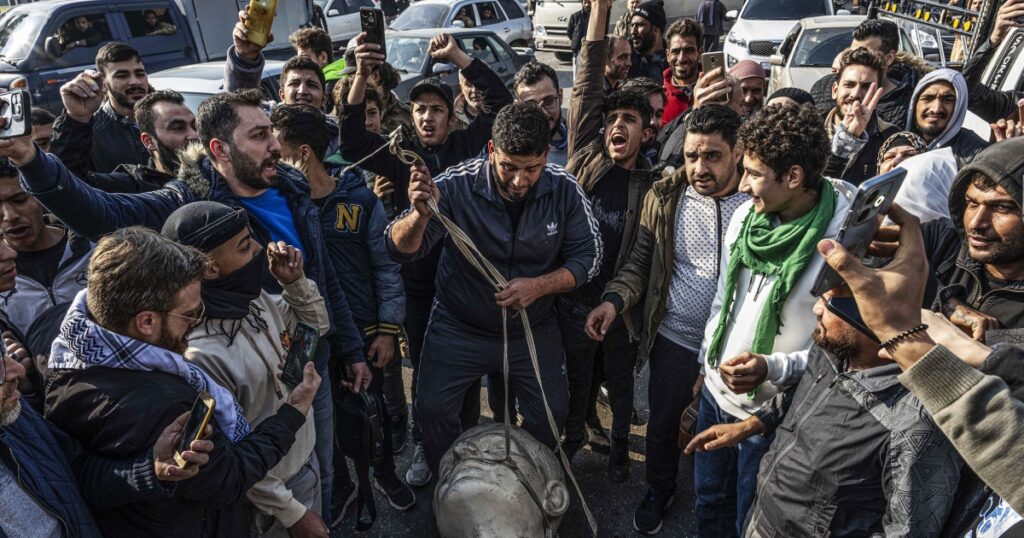He did so as rebels invaded and occupied Damascus, but there appeared to be little counterattack from Assad’s forces. Their lightning advance only began on November 27, and they quickly captured the cities of Aleppo, Hama, and the capital itself.
The rebels appear to have taken advantage of the fact that Syria’s backers are distracted elsewhere: by Russia in Ukraine, and by Iran and its Lebanese proxy Hezbollah, which is fighting Israel. Nevertheless, many experts did not expect this to happen. And Moscow was no exception.
“What happened surprised the whole world, and we are no exception here,” Kremlin spokesman Dmitry Peskov said on Monday.
Syria has dominated the international consciousness for almost a decade, erupting into civil war after President Assad crushed peaceful protests during the region-wide Arab Spring in 2011.
It soon became a dizzyingly complex conflict, with Iran, Russia and Hezbollah lining up behind Assad, and the United States, Turkey and others supporting various rebel groups. They fought not only with rebel groups, but also with the Islamic State terrorist organization. It occupied large swaths of Syria and Iraq, then surrendered them.
But until last month, the conflict remained largely at a stalemate after Assad’s forces regained control of large swaths of the country.
Syrians are celebrating and exploring

As rebel forces swept through Damascus, celebratory gunshots echoed through the streets as people wrapped themselves in Syrian rebel flags and toppled statues of the former rulers.
The war has caused more than 13 million people to flee their homes, according to the United Nations refugee agency UNHCR. About 7 million of them are internally displaced and 6 million are evacuated abroad, scattered in Turkey, other parts of the Middle East, and other regions. The Syrian conflict contributed to a wave of mass migration to Europe, but it also sparked a right-wing backlash across the continent that continues to this day.
Many members of this diaspora have also expressed surprise and joy at the collapse of the Assad regime, and some have hurried to return home.
Thousands of people rallied in European cities including London and Berlin. Berlin is Germany’s capital and home to the continent’s largest Syrian population, with more than 1 million people living there. It wasn’t just combat that they were running from.
Assad’s brutality was laid bare in detail on Sunday as Syrians began releasing people from the regime’s network of political prisons, essentially dungeons. Human rights groups say Assad’s regime has disappeared, tortured and executed its own people.
One of these liberated concentration camps is Saidnaya military prison on the outskirts of Damascus, known as the “human slaughterhouse,” where an estimated 13,000 people in total are executed each week, according to Amnesty International. That’s what it means. Families across the country are searching for their loved ones who have been held as political prisoners for years, with searches underway Monday after survivors reported the existence of a secret underground prison.
What’s next for the Rebels?
Its brutality has been replaced by uncertainty.
The rebels are led by Hayat Tahrir al-Sham (HTS), a group that evolved from al-Qaeda affiliates. Its leader, Abu Mohammad al-Jolani, was involved with extremists fighting U.S. forces in Iraq after the 2003 invasion. And the State Department is offering a $10 million reward for information about him.
But in recent years, he has sought to project a more moderate image, cutting ties with al-Qaeda and abandoning international extremism, focusing instead on creating an Islamic republic in Syria. He said he supports religious tolerance and internal debate.
This was echoed in an order issued by the Syrian state newspaper on Monday that there should be no restrictions on women’s clothing.
Still, countless complexities and issues remain.



